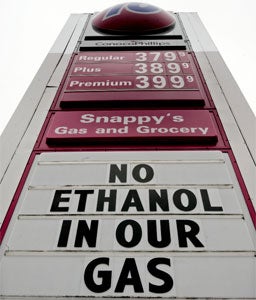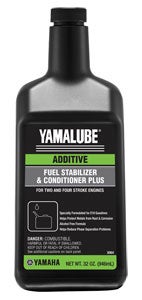What You Should Know About Ethanol in Your PWC’s Fuel
How to protect your PWC
Last week, the Environmental Protection Agency made the decision to allow blends of ethanol as high as 15% to be allowed in gasoline for model-year 2007 and newer cars and light trucks. You might have heard about it. The National Marine Manufacturer’s Association has been vigorously opposing the increase. The good news is that the EPA excluded marine engines, meaning basically that you won’t be forced into buying E15 for your personal watercraft or boat.
Why is that good news? Ethanol hasn’t played nice in marine engines. Since its introduction in 2006, ethyl alcohol (most famously credited as being made from corn) has been blamed for everything from dissolving fuel tanks (partly true, as older fiberglass tanks of certain kinds actually decomposed) to clogging fuel systems. One of ethanol’s main problems is that it is a solvent. It can loosen up all sorts of gunk and residue in fuel tanks, sending them on through the system to clog fuel filters or gum up carburetors. The end result might be as simple as frequent stalling, or as drastic as a shot carburetor.

Ethanol will also easily absorb water. That’s not a problem in our cars, but a PWC is used in a moist, humid, wet environment. PWC or boats also don’t get used nearly as often. That can lead to water contamination of your fuel supply, resulting in an engine running lean from water contamination. On older engines (mostly pre-1992), the plastic and rubber parts, like fuel hoses, could also become brittle and dry, leading to failure. Long-term problems include breakdowns of rubber, plastic, fiberglass, or aluminum parts, rust, and serious engine damage.
Current engines can’t handle higher doses of ethanol, yet there have been reports of fuel companies, somewhere in the supply chain, illegally mixing much higher concentrations of ethanol than 10%. Even at that minimal level, water that formerly sat at the bottom of fuel tanks, below the range of the pickups, is now soluble in ethanol and will make its way into your engine. That fuel is also likely to be lower octane, which can cause all sorts of performance problems or even damage.
So what can you do about it? I know some PWC owners who are going out of their way to find a gas station that still sells non-ethanol fuel. That’s ideal, but not always practical. Another suggestion is to make sure you’re going through fuel at least every 2-4 weeks, and buying from busy stations that are frequently turning over their own supplies. Again, a good idea, but it doesn’t always happen.

Though many owners already upset at high gas prices will cringe, perhaps the best, most practical solution is to use a non-alcohol fuel conditioner/stabilizer at every fill-up. Several organizations, including BoatU.S., currently recommend this action as the best solution to the problem. Yamaha recommends one ounce of Yamalube fuel stabilizer to every three gallons of fuel. Doing the quick math, that equates to adding about $2.70 to your fuel budget every time you fill the tank. There are numerous similar products on the market as well.
Obviously E10 isn’t great, but E15 problems could be worse. Although the EPA is apparently guaranteeing that fuels will be carefully labeled so that consumers don’t get confused, there remains the worry that PWC and boat owners will mistakenly fuel up with the higher ethanol blend at the local gas station.
And there remains the concern that shady stations may be selling higher blends on the sly.
I don’t like it, but I’m backing the fuel conditioner/stabilizer route. I’ve had an ethanol-related carburetor situation, and it’s just not worth it to chance another in my opinion.
In short, next time you fill up…add a chaser.
Get PersonalWatercraft.com in your Inbox!
Like PersonalWatercraft.com on Facebook
Comments
Most Popular

2025 Yamaha JetBlaster PRO 2-Up Review

Remembering the Sea-Doo XP

2024 Kawasaki Jet Ski STX 160X Review

Whatever Happened to the Wetbike?

2025 Yamaha JetBlaster Review











 Your Privacy Choices
Your Privacy Choices